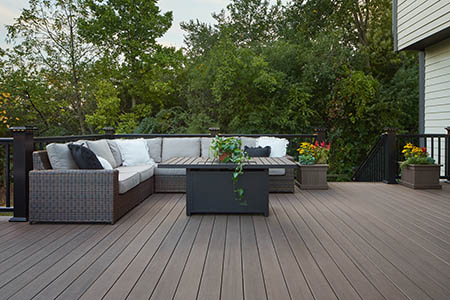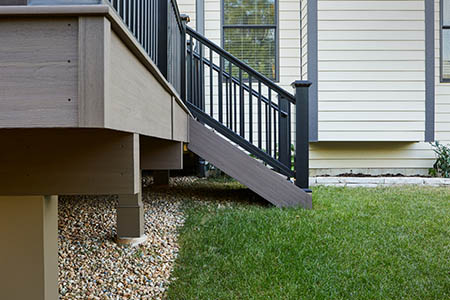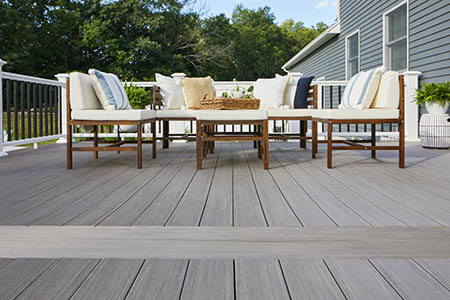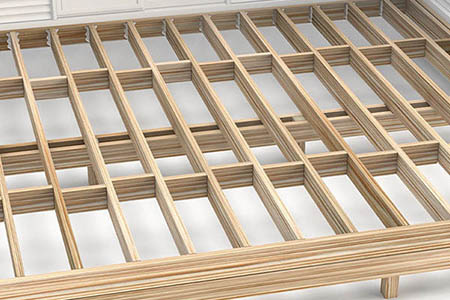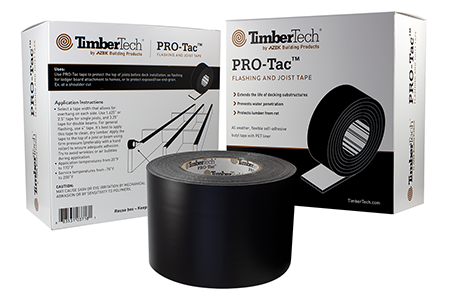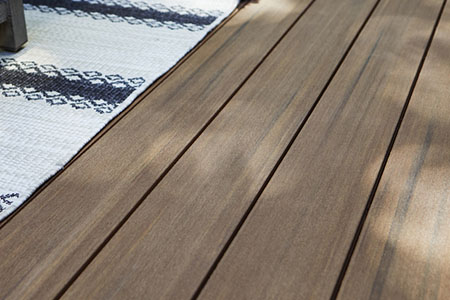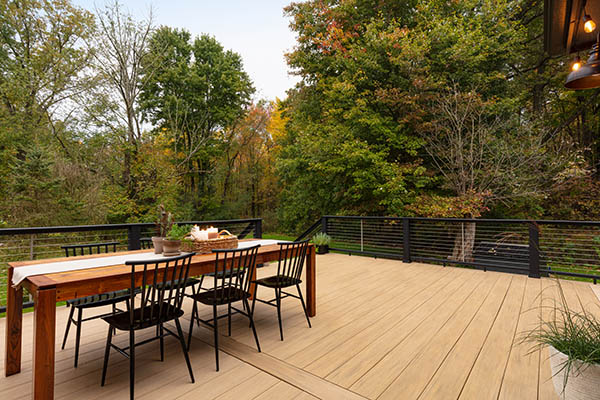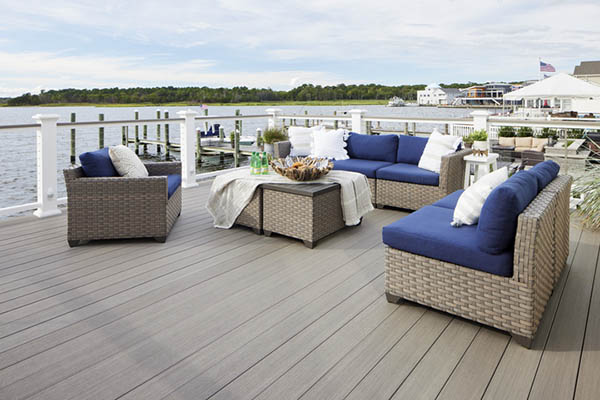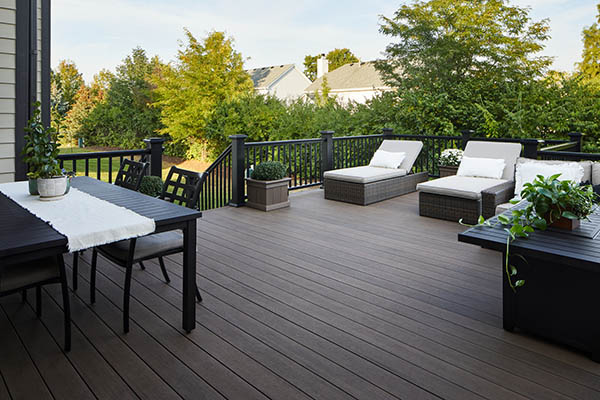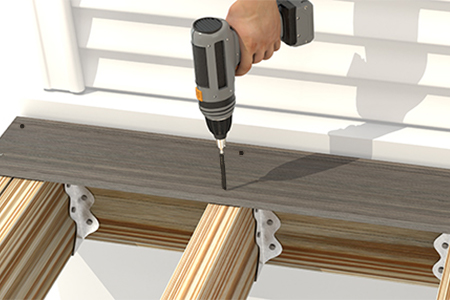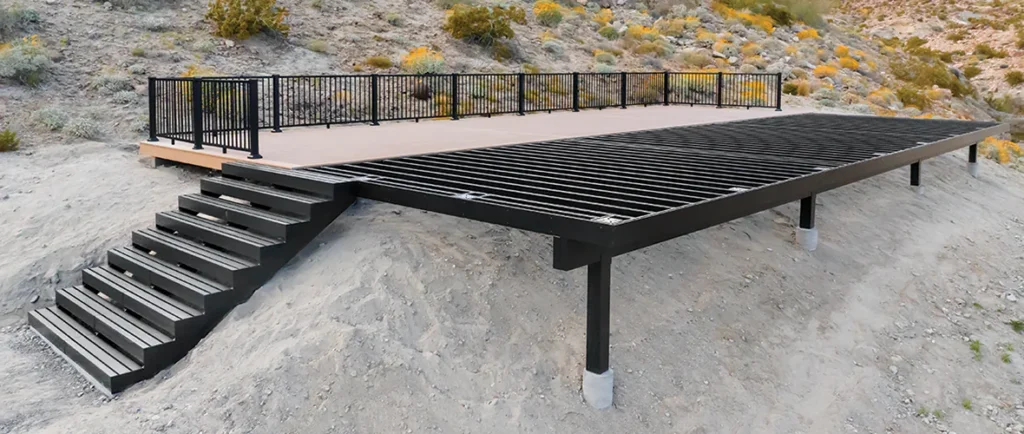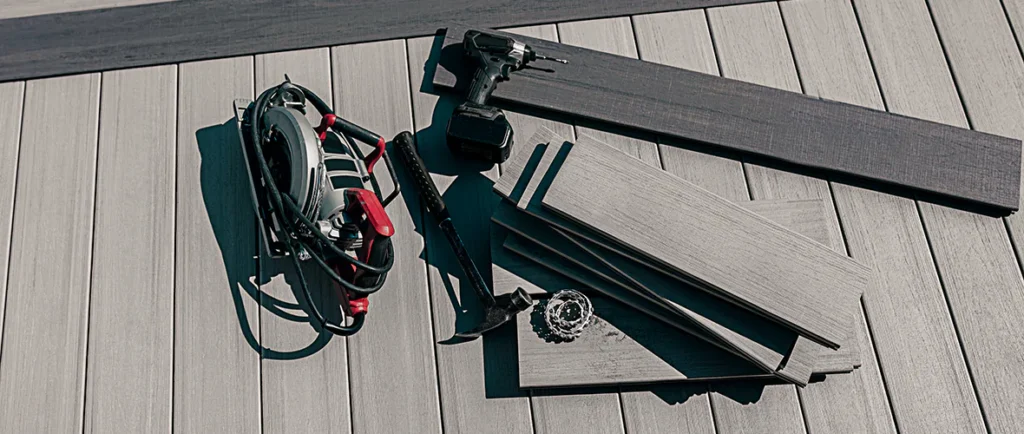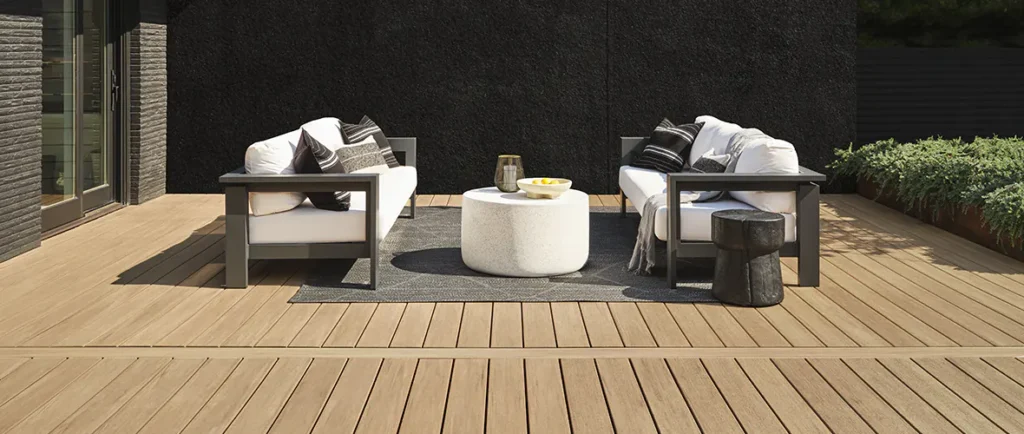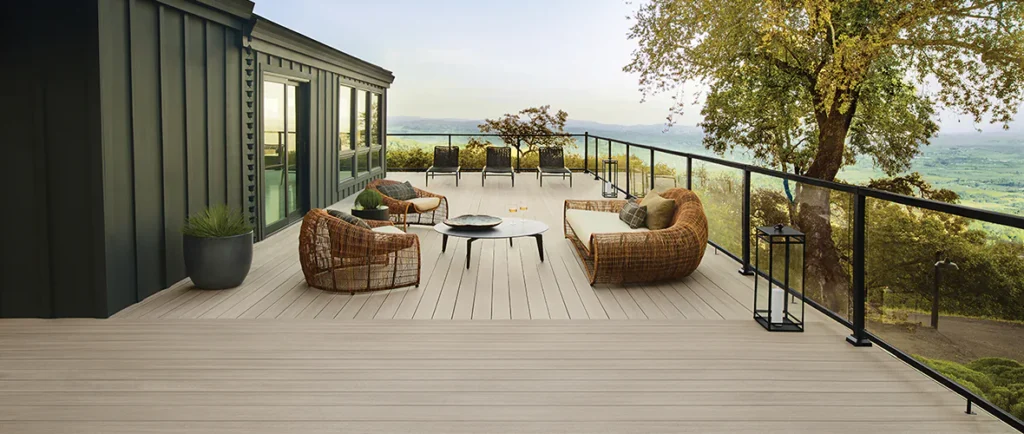Wondering if it’s time for a deck replacement? Whether you’re worried about the condition of your traditional wood deck, considering an upgrade to superior materials, or simply want more space, it’s important to understand your options.
Problems with your deck will either require repairs or replacement. Deck replacement can refer to two different projects, namely:
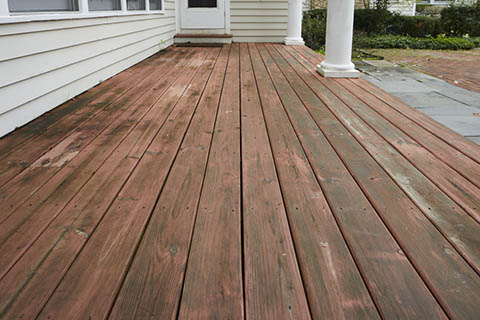
Deck Board Replacement
Also called “resurfacing,” this project involves the replacement of the deck surface boards, while the original substructure remains intact. In some cases, the substructure may require some minor repairs or additional blocking and reinforcement.
A common reason to replace deck boards is moisture damage such as rot (pictured), warping, or splitting in the deck surface only.
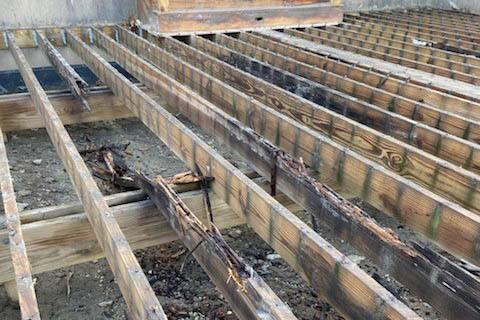
Full Deck Replacement
This project involves the full teardown and replacement of the entire structure, from substructure to deck surface and railing.
A common reason for a full deck replacement is pervasive rot in the joists (pictured), beams, or posts of the substructure.
The right route for you will depend on factors ranging from the health of your deck to your preferred timeline and budget.
Is It Better to Repair or Replace a Deck?
Depending on the condition of your deck, it may be more cost-effective to perform repairs rather than a full deck replacement.
How to Decide on the Right Path for Your Deck Project
- Assess your deck health
- Think through deck longevity (how many more years you plan to use the deck)
- Consider the cost of repair vs replacement
Consider these factors to determine whether deck repair or replacement is right for you.
Step 1: Assess Your Deck Health
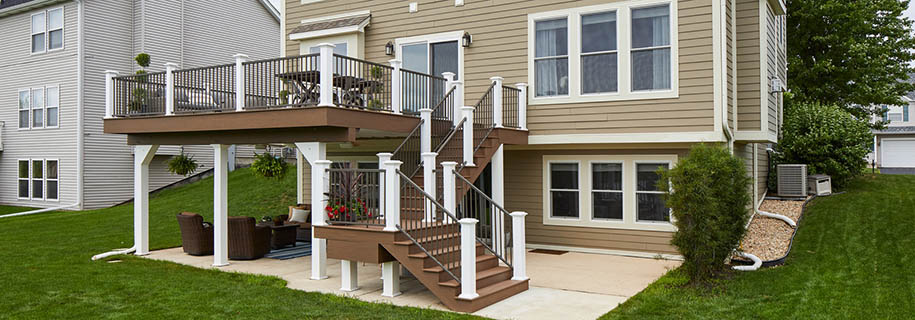
To decide whether you need a deck replacement, you first need a full picture of your deck’s health. Performing a thorough deck inspection of your deck surface and substructure can help you identify any problems and determine whether repair or replacement is necessary.
Problems can include:
- Rot, mold, and mildew in your substructure or surface
- Rusted or loose fasteners in your substructure or surface
- Loose ledger board, a critical part of your substructure
PROBLEMS WITH YOUR DECK SURFACE can likely be repaired because they are often aesthetic in nature.
PROBLEMS WITH YOUR SUBSTRUCTURE may indicate a full teardown, due to the risk of problems affecting your deck’s structural integrity.
Not totally sure of the parts of your deck, or the difference between substructure and deck surface? Get a quick refresh on deck anatomy.
Wood Deck Surface & Substructure Problems: What to Look For
Traditional wood decking is highly vulnerable to moisture and the elements. In fact, the average lifespan of a traditional wood deck is only about 10 to 15 years, making deck replacement inevitable.
During your DIY deck replacement inspection, keep an eye out for these common problems with wood deck surfaces and substructures:
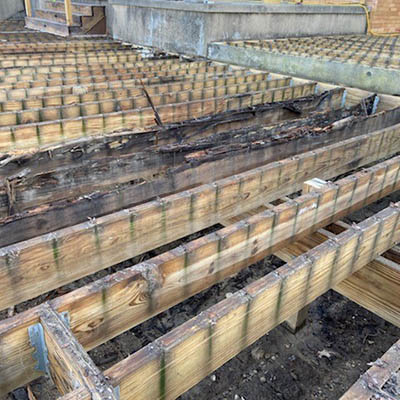
Rot, Mold, & Mildew
Caused by moisture, all of these can weaken your deck’s structure. Pay special attention to your joists and your posts as these are common areas affected by moisture damage.
Indications of REPAIR: Small, localized instances of rot, mold, or mildew on your deck surface that are easily treated.
Indications of FULL REPLACEMENT: Pervasive rot (pictured) throughout the substructure that affects deck structural integrity.
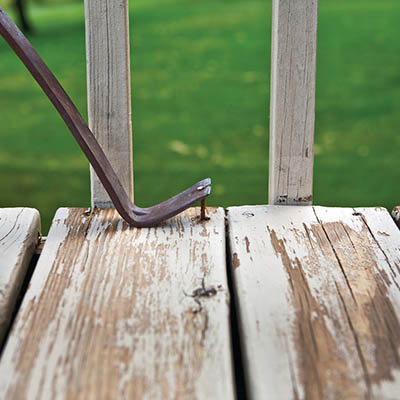
Rusted or Loose Fasteners
Can occur anywhere in the deck surface or substructure.
Indications of REPAIR: A few rusted, loose, or protruding fasteners (pictured) in the surface or substructure that can easily be replaced.
Indications of FULL REPLACEMENT: Excessive rusted or loose screws in your substructure which can indicate pervasive rot or insect damage.
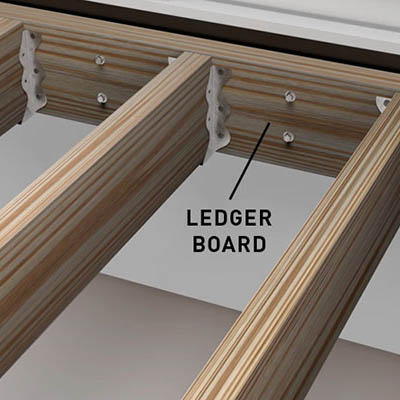
Loose Ledger Board
The ledger board is a part of the substructure that secures the deck to your home. To view it, you’ll either need to go under your deck or remove the surface boards closest to your house.
Indications of REPAIR: Debris build-up between ledger and house, indicating a small gap.
Indications of FULL REPLACEMENT: Ledger pulling away from home due to damage such as pervasive rot.
How to Repair Common Wood Deck Problems
If the problems above only indicate repair, follow these best practices for getting your deck back to top form.
Rot, Mold, & Mildew
✓ Clean instances of mold and mildew with the appropriate deck cleaner.
✓ For any instance of rot in your wood deck boards or substructure, we recommend replacing the affected member.
Rusted or Loose Fasteners
✓ Replace rusted screws, nails, and fasteners.
✓ Tighten any loose fasteners or screws.
✓ Hammer in protruding nails.
Loose Ledger Board
✓ Remove any debris from between the ledger and your home.
✓ Tighten the fasteners to better secure the ledger board.
✓ If the ledger is loose due to rot, replacement is necessary.
Wishing you could get back the time you’d spend on labor-intensive DIY deck replacement or repair? You can.
Composite Deck Surface & Substructure Problems: What to Look For
If you already have a TimberTech capped polymer or capped composite deck, your deck surface is protected from moisture damage and weathering. However, your substructure is likely made of wood, so check your wood substructure for the three main problems listed above as well as any other issues to ensure your deck is built to last.
Step 2: Think Through Deck Longevity
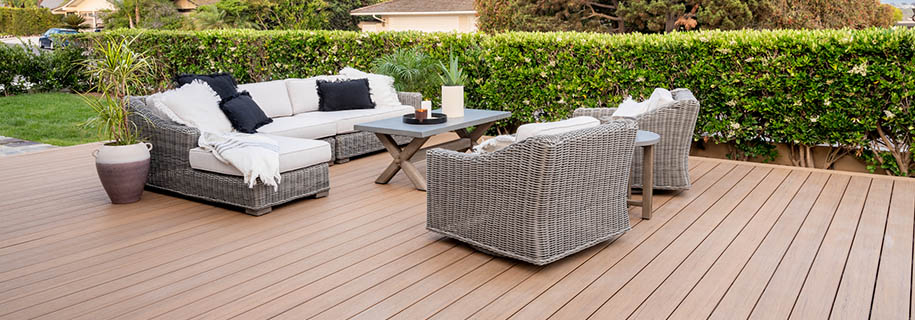
How much longer do you plan to stay in your current home? And how many more years would you like to get out of your current deck? Answers to these questions can help inform whether it’s more cost-effective to simply repair your deck, or whether you’ll enjoy greater long-term value with a full replacement.
IMPROVE YOUR HOME VALUE WITH SUSTAINABLE MATERIALS
Investing in durable, sustainable materials like TimberTech decking for your full deck replacement can increase your home resale value. Learn more about sustainable composite decking.
If You Plan to Move in a Few Years…
You may want to opt for repairs — or, if your substructure is healthy, replace your deck surface with new boards — so long as your deck’s problems are surface level. If your deck has any structural issues, be sure to repair or replace the affected area to ensure structural safety, regardless of when you’re planning to move.
Repairing your traditional wood deck or resurfacing it with more wood will save you money upfront than a full teardown. However, remember to factor in the rigorous and costly wood deck maintenance you’ll need to perform regularly until you move.
If You Plan to Stay Where You Are…
Consider a full deck replacement and upgrade from wood to superior engineered decking materials for a longer-lasting, lower-maintenance deck. Choosing a full deck replacement with higher-quality materials may cost more upfront than sticking with wood, but will save you expenses in the long-run. Plus, you’ll enjoy low-maintenance outdoor living.
Step 3: Consider the Cost of Repair vs Replacement
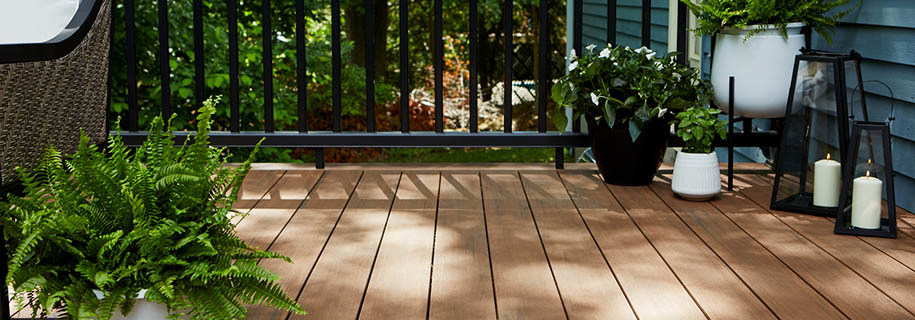
If the cost of repairs is close to, equal to, or greater than the cost to fully replace your deck, you may want to opt for the replacement. A full replacement will give you greater long-term value, as you’ll optimize your deck’s lifespan with a brand-new substructure in addition to new decking.
So how do you tell how much repairs will cost you vs replacement? A deck repair contractor can evaluate your project and give you an estimate.
Or, if you’re considering a DIY deck replacement or repair job yourself, take these factors into consideration:
Materials
Material costs vary based on quantity and quality. Repairs often require fewer materials than a full deck replacement. The quality of your deck materials — such as pressure-treated lumber vs superior composite decking — will also affect your total upfront costs.
Labor
Considering a DIY deck replacement or repair project? A DIY job may save you from labor costs, but it will likely increase your project timeline, especially if you’re working solo. You’ll also need to ensure you have access to the right tools for job, either by buying or renting.
Long-Term Costs
Choosing traditional wood will likely mean you’ll repeat all your hard work in a few years’ time (not to mention perform regular, costly maintenance). Prefer a lower maintenance option? TimberTech decking is a value-rich choice that’ll save you costs in the long-run.
Skip Future Deck Repairs & Replacements With TimberTech
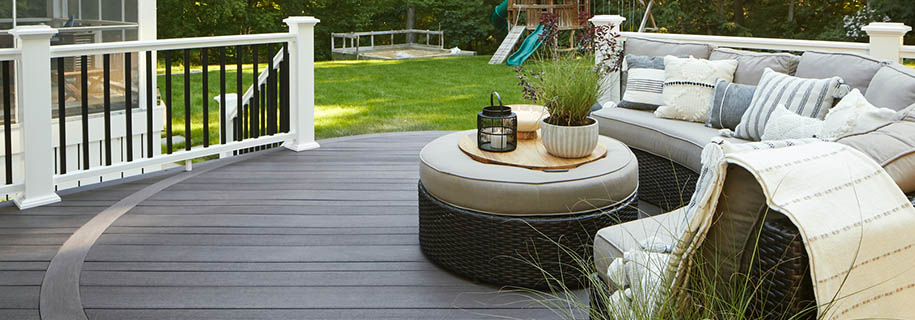
Upgrading to TimberTech capped polymer or capped composite decking and minimize your risks of future repairs or deck replacement.
Why Choose TimberTech Decking
Time for a Full Deck Replacement? Time for TimberTech
TimberTech decking is designed to last for decades — so your substructure needs to be in top condition. We recommend a full deck replacement for most substructures to optimize your deck lifespan.
Plus, you can modernize your deck design to better suit your needs and preferences.
Tips for a Smooth DIY Deck Replacement Project With TimberTech
If you’re committing to a DIY deck replacement project, we have the tips you need to ensure a smooth build.
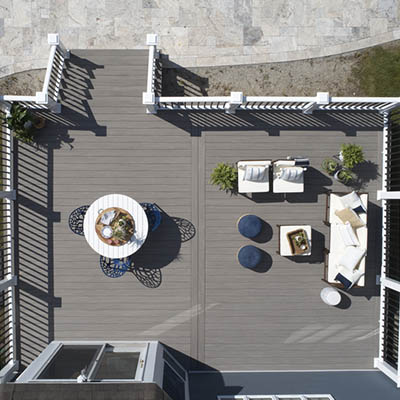
Deck Shape
Choose a simple deck design, like a square or rectangle, and stick to what you know. Always keep your skillset and comfort level in mind when making choices for your DIY deck replacement.
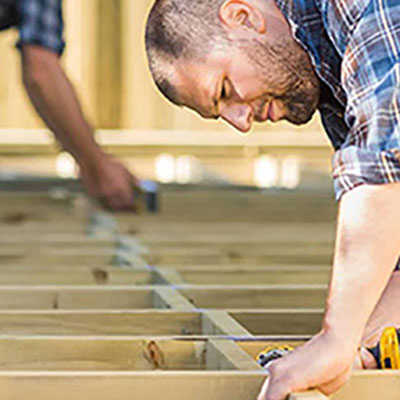
Joist Spacing & Blocking
With a square or rectangular deck design, you’ll be able to use standard joist spacing (16” on center) and blocking (4’ to 6’ apart) for your substructure build.
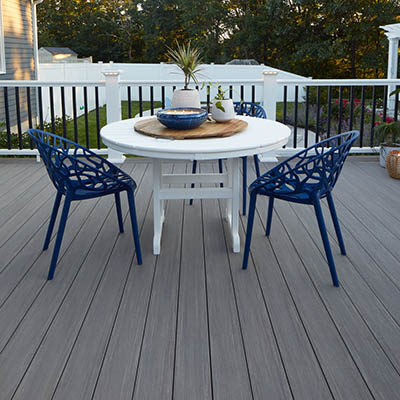
Easy Decking Installation
Worried about installing non-wood decking? Don’t be. TimberTech Advanced PVC decking installation with top-down fasteners shares many of the same best practices as wood.
Complete Your Final Deck Replacement Project With TimberTech
Minimize your risk of future repairs or another deck replacement with an enduringly beautiful TimberTech deck.
Not sure where to start? Find the guidance and resources you need on our Start Your Journey page. Learn about our deck and railing options, get cost estimates for your project, find inspiring design ideas, and more.

